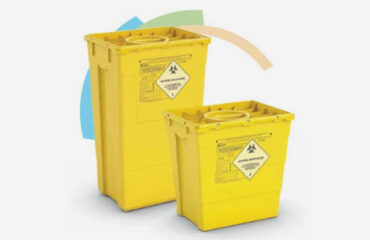All about Reclaim Waste
All about Reclaim Waste
Blog Article
Facts About Reclaim Waste Uncovered
Table of ContentsAll About Reclaim WasteEverything about Reclaim WasteExamine This Report about Reclaim WasteNot known Facts About Reclaim WasteReclaim Waste - Questions
Domestic sewage waste refers to the waste and items from a residential septic storage tank. The correct administration and disposal of domestic sewer waste need liquid waste to be moved to a sewer treatment plant where the appropriate approaches and equipment are applied to detoxify and dispose of waste.
Commercial waste commonly consists of possible risks, such as combustible products or a mixture of liquid and solid waste items, and requires a more sophisticated and thorough disposal procedure. The disposal of commercial waste usually includes the purification of waste prior to transport to make certain safe and proper disposal. Industrial waste is created from by-products and overflow of industrial processes and production.
This type of waste can not utilize the exact same sewage administration transport or procedures as septic or industrial liquids. The hazardous waste management process requires the inspection and testing of liquid waste prior to it undertakes the disposal procedure (industrial wastewater treatment). Drainage waste is the fluid waste that comes from overflow and excess stormwater in highly populated areas or cities
Overflow waste can cause contamination and flooding if not taken care of effectively. Making sure appropriate waste management can protect against catastrophes and decrease ecological damage.
Reclaim Waste Can Be Fun For Everyone
Call PROS Services today to learn more about our waste monitoring and disposal services and the appropriate means to take care of the fluid waste you generate.
(https://reclaimwaste1.start.page)This so-called 'wastewater' is not just a vital source yet, after treatment, will be launched to our land, waterways or the ocean. Utilized water from commodes, showers, baths, kitchen area sinks, washings and industrial processes is understood as wastewater.

water used to cool down equipment or clean plant and devices). Stormwater, a kind of wastewater, is overflow that streams from farming and urban locations such as roofs, parks, yards, roads, paths and seamless gutters right into stormwater drains, after rain. Stormwater streams untreated directly to regional creeks or rivers, ultimately getting to the ocean.
The Single Strategy To Use For Reclaim Waste
In Queensland, a lot of wastewater is dealt with at sewage treatment plants. Wastewater is moved from residential or commercial websites through a system of sewers and pump stations, recognized as sewage reticulation, to a sewage treatment plant. City governments construct, keep and run most sewage treatment plants. Operators are accredited under the Environmental Defense Act 1994 to discharge cured wastewater at an acceptable environmental requirement into rivers.
The Division of Natural Resources recommends city governments about managing, operating and preserving sewerage systems and treatment plants. In unsewered locations, regional governments may need homeowners to install individual or house sewer therapy systems to deal with residential wastewater from bathrooms, cooking areas, restrooms and washings. The Department of Natural Resources authorises making use of house systems when they are proven to be efficient.
In some new subdivisions, therapy of some stormwater to eliminate clutter, sand and gravel has actually started using gross pollutant catches. Wastewater treatment takes place in four phases: Eliminates strong matter.
Wastewater then moves right into big storage tanks where solids settle and are gotten rid of as sludge. Grease and scum are skimmed from the surface area. Uses little living organisms understands as micro-organisms to damage down and eliminate continuing to check be liquified wastes and fine bits. Micro-organisms and wastes are included in the sludge. Removes nitrogen and phosphorus nutrients that might trigger algal blossoms in our rivers and endanger water life.
Some Known Incorrect Statements About Reclaim Waste
Nutrient elimination is not offered at all sewage therapy plants due to the fact that it calls for pricey specialized devices. Clear liquid effluent produced after therapy might still include disease-causing micro-organisms - liquid waste removal melbourne.

The majority of wastewater flows right into the sewerage system. Under the Act, regional federal governments provide authorizations and licences for eco relevant tasks (ERAs) including wastewater launches that might have a regional influence.
More About Reclaim Waste
Otherwise, samples are taken for lab evaluation. Frequently lots of examinations are required to develop the levels of each of the different pollutants such as oils, heavy metals and chemicals in water. Tracking provides accurate information regarding water high quality and can verify that permit problems are being satisfied. The details gotten via surveillance provides the basis for making water quality decisions.
Report this page